What Makes A Good Retail Display? Tips and Examples


There’s no denying it, good retail displays are essential in your stores. They entice your customers, engage them in new products, build brand awareness and drive more sales. However, creating them can be daunting for even the most experienced marketer. Whether in a new retail marketing role or seeking fresh inspiration, this blog is the ultimate guide to creating a compelling retail display. And, we’ve found some great examples that stand out on the high street for all the right reasons.
A good retail display must be creative and grab the attention of passing target customers with engaging, readable content. In addition, it needs to be easily visible, in excellent condition and provide messaging that resonates with shoppers making purchase decisions.
While this may sound simple, great retail displays require nuance and a crisp understanding of your audience. So let’s explore it in greater depth.
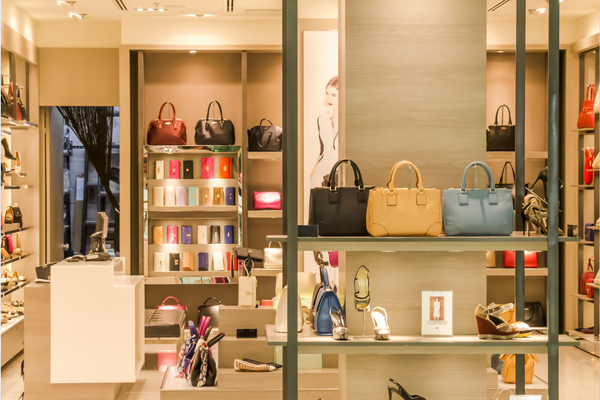
Firstly, let’s refresh what a retail display is.
A retail display is a piece of physical marketing, fixture or in-store area designed to attract and engage customers, showcase merchandise and drive more purchases. It can be almost anything that presents or promotes your products or services.
“Retail Display” also refers to combining physical structures and marketing materials with other psychological marketing tactics. For example, using certain colours and imagery, engaging the five senses and strategic floor planning. We’re talking creatively designed free-standing display units, bold shelf talkers, interactive in-store areas – the lot.
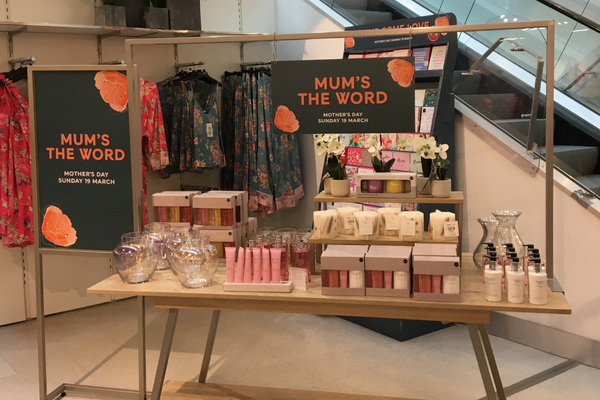
With up to 76% of purchase decisions being made in-store, retail displays can be the final push to secure a sale. Whether executed on a big or small scale, the results can be outstanding. For example, a recent study found that placing products in new displays can increase sales by up to 478% – yes, you read that right, 478%!
They are like your additional (but silent and usually stationary) salespeople. They offer a quick and effective way to grab your customers’ attention, showcase your brand, offer promotions and make your products and services stand out from competitors. We know that they work, but studies such as this one, show just how effective they can be.
We look at it like this: imagine your retail display is a person that you haven’t seen in months. You might know them well or you might have only met them a couple of times, regardless, when you see them, you make instant judgments… just like you do in stores with products and their displays. Have they caught your attention? How are they presented? Do you want to know more about them?
With time and big budgets going into retail display planning, design, production and execution, it’s vital that they work. They need to send out the right message to your customers. You need them to have the desired impact: more sales.
Understanding your target customers is the first step in creating a good retail display. How do they behave? What appeals to them? How do they navigate through your stores? We’ve explored different shopper demographics in more detail in this article.
While you likely have this information already, utilising it can ensure your displays engage the right consumers. Ultimately, shopper insights should inform everything from the colours, imagery and messaging you use to product arrangement and lighting. And let’s not forget the importance of coordinating your in-store displays with what’s happening in your online marketing.
With clear aims and foundations, you can focus on other visual merchandising tactics. For example, the Rule of 3 (that displaying products in groups of three is more engaging), creating displays for eye level, displaying products in optimal locations, and how often you refresh displays.
Understanding and using the right retail displays is vital – particularly when they will impact your customer’s journey through your store, and you can position them strategically. So, what are some of the most popular types of display?
The eye into your store. Your window displays should provide a taster of all the exciting things you have to offer and drive footfall.
The first thing that customers see when stepping foot inside a store. The Entryway display is perfect for seasonal goods and announcing new products and sales.
FSDUs are great for stopping shoppers in their tracks and encouraging impulse buys! Dump bins can save space and often house a lot of merchandise.
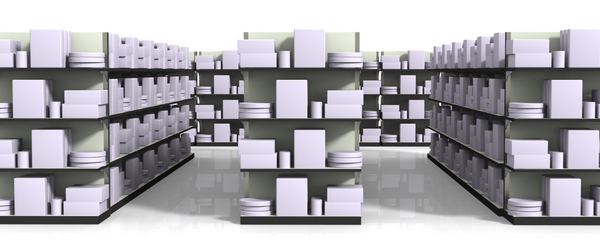
Endcap displays sit in the space between aisles. They are ideal for your best product promotions and creative brand or individual product takeovers.
Tabletop displays are brilliant for more immersive experiences and adding a lifestyle/aspirational feel to your displays. Or, they can be great for stacking essential items for shoppers to grab on the go!
Display cabinets are ideal for jewellery and other luxury items, these enclosed displays can help to make your items look more special, expensive and/or beautiful.
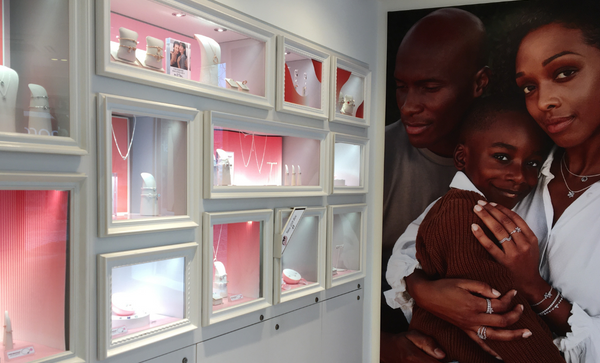
Gondola displays are great for regularly changing seasonal products and campaign materials. They offer flexibility as they can be arranged to showcase products of varying sizes.
Quick, effective and portable, banner stands offer a large graphic display and can be used to share information with customers, tell brand stories and direct attention to certain products or deals.
These smaller in-store marketing tools stand out from the aisle or display unit to attract customers’ attention. They are great for highlighting new products and offers.
From countertop posters and A-frames to large lifestyle wall graphics and overhead posters, signage can draw attention to your products and enhance all your displays.
For more information, including the pros and cons of each display and when to use them, check out our latest article exploring the different types of retail displays.
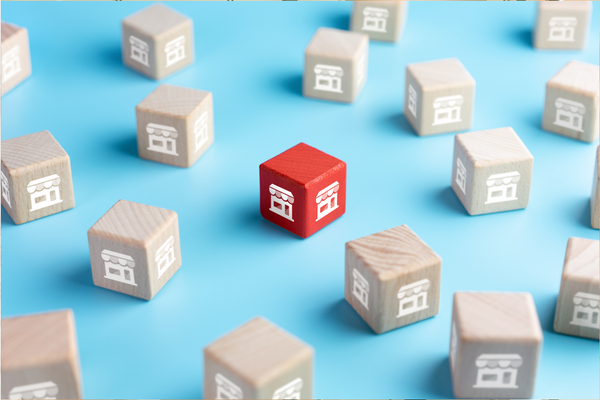
Every individual store is unique. Your retail displays and product promotions can tap into local sales opportunities. From geographical location to consumer demographics, micro trends and local events, knowing and exploiting these demands can help you to better connect with customers and drive more sales.
The ultimate optimisation of your retail displays is pinpointing the products and messaging that will be the most effective in that specific store at any time. Unlike online, this is no easy feat but with the right tech – such as Colateral’s Artwork Automation platform – you can localise your national campaigns while maintaining brand consistency.
Discover our 8 tips for marketing localisation for multi-site retailers.
Here are some great retail displays we’ve spotted in stores. Although they use different techniques to attract and engage customers, depending on their store type and objectives, we think they all do it well.
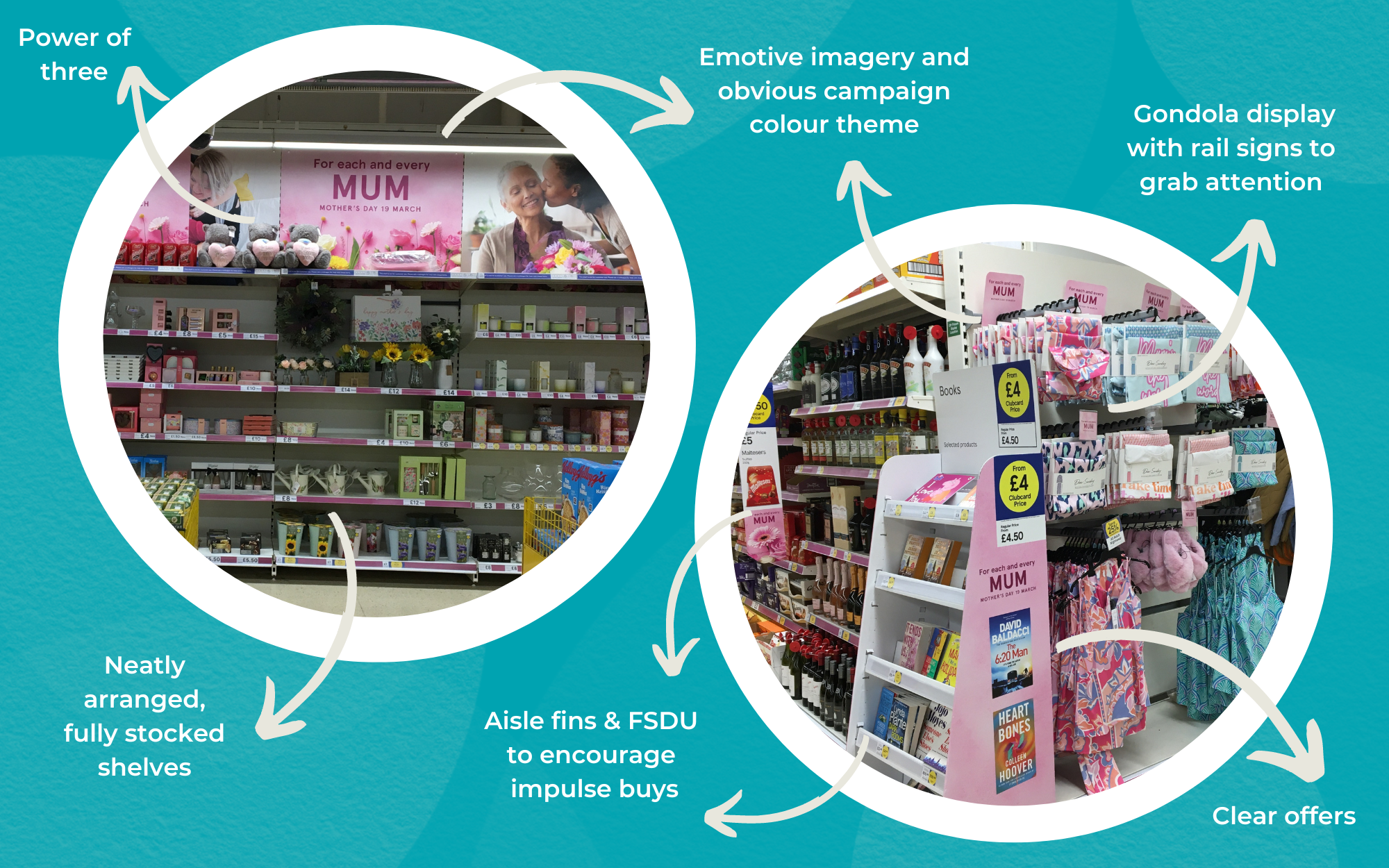
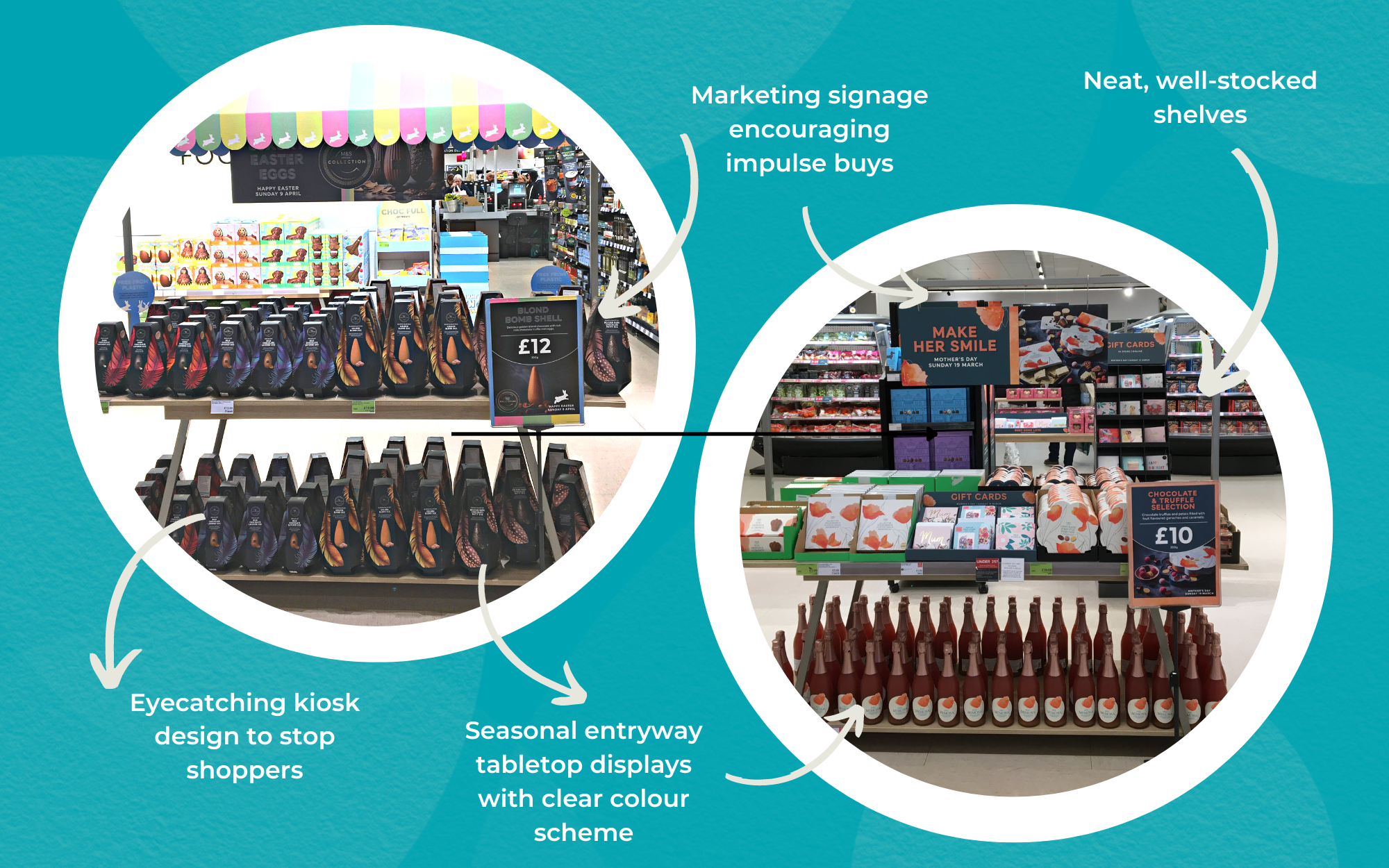
These campaigns show how effective seasonal displays can be, whether happening store-wide or in certain departments. They use multiple techniques to grab customer attention, from bright and engaging designs to FSDUs, shelf talkers and posters and encourage impulse buys. However, a clear theme is reflected in the displays, and all of the products are well stocked and positioned to have maximum impact on the customers entering or walking around the store.

These aspirational displays catch the eye with perfectly arranged and colour-coordinated merchandise, signage and props. This arrangement encourages shoppers to stop and look at individual items. Using emotive language on the displays, they promote more luxury purchases for loved ones and ‘sell the dream’ of what these products could look like in your own home. The different levels of display helps to showcase the products in a balanced and beautiful way.
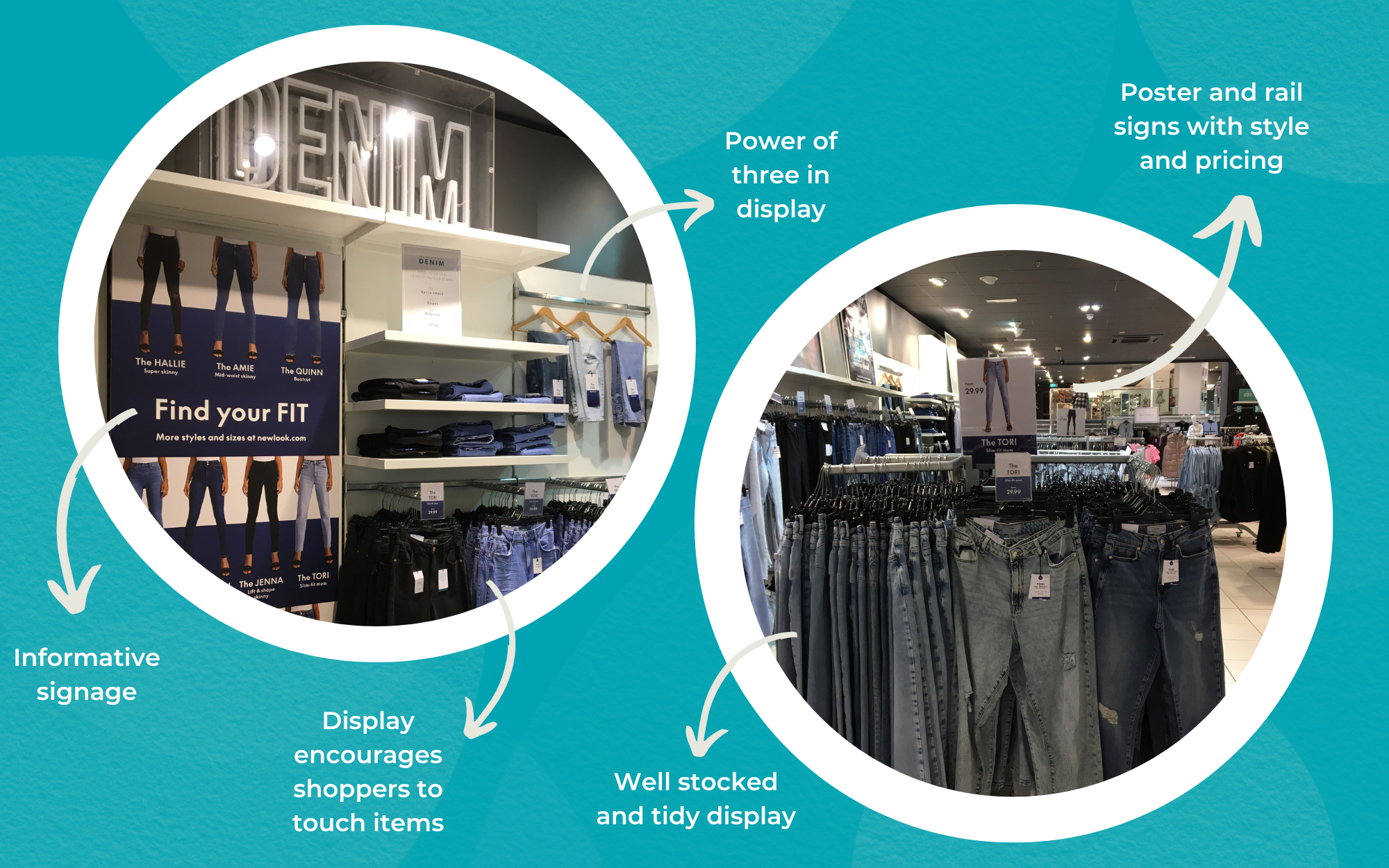
While this may look like quite a simple design, the signage telling shoppers to ‘find your fit’ personalises the display and encourages them to stop and learn about the individual products. The power of three is used in both the graphic and the visual merchandising to draw the eye in and make it more visually appealing. The hanging jeans make shoppers want to stop and touch the fabric, and everything is well-stocked and easy to read.

There is so much more to good retail displays than communicating what goes where (and when) in stores. Your store teams understand what is happening on the ground. They have a wealth of information about in-store demand, customer experiences and how your retail displays work.
Meanwhile, head office can see the sales spikes from certain campaigns and every store’s locality information. Enabling store teams and head office to communicate seamlessly and work in tandem to optimise your displays can deliver incredible results.
Store data can be easily collected and stored in dynamic store profiles, ready to be harnessed for future campaigns. For example, damaged or missing displays can be reported and rectified rapidly. Colateral allows stores to order whatever they need instantly! And, head office teams can better understand (and even see) what’s happening in each store, all helping them to improve the customer experience.
Multiple teams are involved in bringing your displays to life, from the initial planning and creative decisions to the production, communication and installation in-store. However, when it comes to good retail displays, execution and maintenance of your displays – such as restocking items and refreshing display elements – can make or break your campaigns.
Research has found that 68% of consumers believe a store’s signage alone reflects its products or services. You need your displays to be implemented on time to coordinate with your other marketing activities and look incredible year-round. Having tools to easily manage and monitor display execution and condition across the store estate is a must.
It sounds simple, but we’ve found that most displays are only 40-60% accurate. Check out our guide to achieving 100% display compliance in every location.
A good retail display needs to be creative and grab the attention of passing target customers with interesting, legible content. It needs to be correct. There is nothing worse than a display with incorrect dates, themes, and featured products in a bad location (don’t add to the examples of in-store marketing faux pas). It needs to be in great condition, with all of the available marketing areas filled correctly and anything worn, damaged or missing quickly replaced. And, to have the best impact, it needs to be executed as planned by the Head Office, with the flexibility to allow location-specific intel to be utilised by store teams.
It’s not a lot to ask, is it?
Well, actually, it is. You need considered creatives, the right displays in the right places, brilliant communication with your store teams and eyes on the ground when you can’t be there in person.
You need your retail displays to do as much of the hard work as possible – and know which displays work best for you and why. It’s far too much to manage without the help of some purpose-built tech.
At Colateral, we ensure your retail displays shine in every store. Whether you’re running a store-wide sale, new product launches or one-off immersive experiences, you can plan and manage in-store campaigns in a simple system. Get in touch to find out more.
To receive weekly in-store marketing insights like this direct to your inbox, subscribe to our mailing list.
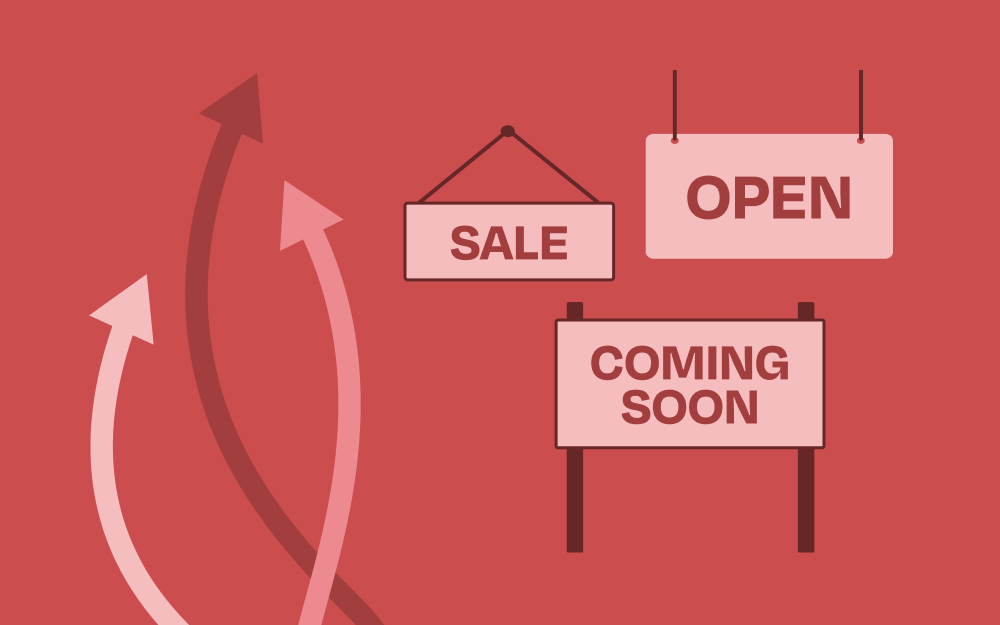 Thought Leadership
Thought Leadership
Around in-store marketing, there is a constant debate about which is more important: Where your...
 Thought Leadership
Thought Leadership
Retailers were once the heartbeat of local communities There was a time that what made...